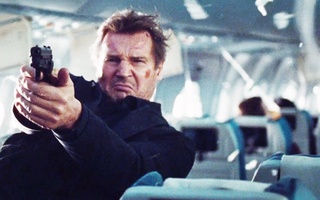How to begin describing Adam Sandler’s Dracula voice? Words spring to mind: grating, shrill, and farcical in an inane way. Well, try to predict the effect of Sandler attempting to sound like a vampire, and you’d be about spot on. However, Sandler’s wearying accent is not even the greatest fault of “Hotel Transylvania.” Rather, the focus on Sandler’s less than compelling plotline combined with the enjoyable supporting cast teases the viewer with the potential of an entertaining animated film without delivering.
“Hotel Transylvania” describes the development of the Count’s relationship with his non-canonical daughter Mavis (voiced by Selena Gomez) over the weekend of her 118th birthday. Invited are the bastions of gothic fiction: Frankenstein’s monster, who is fallaciously called just “Frankenstein” (Kevin James), the Mummy (Cee Lo Green), and Wayne the Werewolf (Steve Buscemi). What really throws a wrench in the cobweb-covered work is the arrival of Jonathan (Andy Samberg), a wide-eyed and feckless human backpacker. Not only does Johnny immediately catch Mavis’ eye, but he also endangers the Hotel’s thus far spotless reputation as a haven for monsters.
It’s hard to decide whether Sandler as Dracula—also frequently called “Drac”—was entertaining or just plain irritating, but, ultimately, he is rarely involved with the best jokes. Compared with the subtle wit of many recent family comedies, Sandler’s slapstick sound is distinctly unimpressive. Dracula aside, “Hotel Transylvania” does deliver some genuine laughs: a maniacally giggling demon sponge or zombie Mozart trading heads with zombie Bach, for example. There is also some great character-based comedy from the likes of the socially awkward Invisible Man (David Spade) and the genuinely disturbing, cannibalistic Quasimodo (Jon Lovitz)—whose French accent is “Ratatouille” meets “Chuckie.” Given the lackluster story of Mavis, the movie would have benefited greatly from following the model set by “Toy Story,” which relies more on secondary characters.
The best comedy moments are reliant upon the characters’ movements: the pinpoint timing of Dracula’s swoops and scurries, the clattering knights and the flapping capes. This is shown to best effect in the perfectly choreographed action sequences. It is artistry of this kind that makes the movie far more entertaining than it would otherwise be; the Gothic references, while occasionally turning up a gem—Dracula claiming that he “invented fun”—are usually unintelligent, utterly relentless, and often flat. When Dracula finds himself on a plane and sees a passenger watching a “Twilight” movie, the only response is a “Is that what they think of [vampires]?” that is emblematic of a cheap shot.
The script is certainly clunky and inelegant in places, particularly in the more emotional scenes—if Sandler doesn’t ruin the moment, then the cringe-inducing lines can be trusted to tilt the scales into absurdity. After the standard of emotional poignancy that we have learned to expect from animated films such as “Up” and “Wall-E,” something feels distinctly lacking in “Hotel Transylvania.” Perhaps it is because the delivery at these times seems fundamentally clichéd and thus insincere.
Dreamworks and Pixar have set the bar high for quality family entertainment, and Sony Pictures Animation has fallen far off the target. Thus far its films, including “Open Season” and “Surf’s Up,” have failed to reach the legendary status earned by the other animation studios, instead remaining temporary fodder for transatlantic flights.
The cinematography is devoid of the stunning visuals found in other recent animated comedies—notably “Kung Fu Panda.” Instead, it is mainly focused on the winding corridors of the castle and its howling, squelching inhabitants. Director Genndy Tartakovsky may have had difficulty distancing his first feature-length film from the style of his earlier works, such as “Dexter’s Laboratory” and “Star Wars: The Clone Wars;” The entire movie gives the impression that these characters would be better displayed in the episodic format of a children’s television show. Then, the secondary characters could be further developed and the plot would not seem so forced.
Ultimately, there are many ways in which “Hotel Transylvania” fails to excite; although it is a mildly entertaining yarn, it lacks the subtlety, wit, and intelligence that is found in so many other animated films. Despite its genuine humor, it remains transient and forgettable.
Read more in Arts
Reader Redux: Building up the ‘Library of Babel’Recommended Articles
-
Dorm Crew Imparts Practical BenefitsJason E. Sandler ’12 is hunched over a toilet in Pennypacker, explaining the best way to reach every stretch of ...
-
'Just Go With It' is Typical Sandler Cinema FareFor Sandler fans who enjoy the likes of “Click” and “Mr. Deeds,” “Just Go With It” will not disappoint; as far as Sandler movies go, it’s safe to call this one a success. At the same time, for those who eschew slapstick, no review is really needed to suggest that this film will most likely bore and offend more refined cinematic sensibilities.
-
Preview: DraculaHRDC's rendition of "Dracula" brings an unexpected twist to an otherwise faithful interpretation of Stoker's classic novel.
-
Dracula Struggles With StructureThe play traces the events following Count Dracula’s decision to relocate from Transylvania to England for the “banquet” of fresh blood offered by the “teeming millions” in London.
-
Law School Remains Under Investigation for 2010 Title IX ComplaintMembers of the Department of Education’s Office of Civil Rights are still investigating a complaint against the Law School filed in 2010, which alleges that the school wrongly handled cases of sexual assault.
-
 Neesoning
Neesoning













